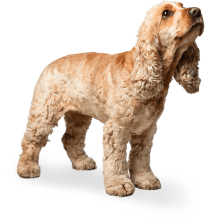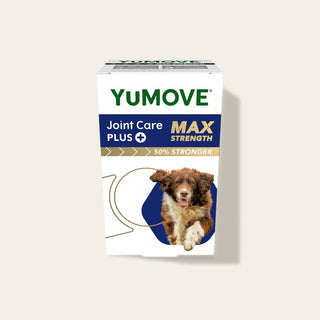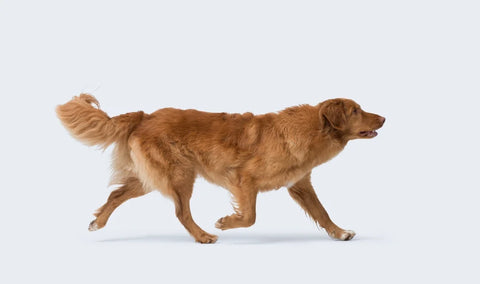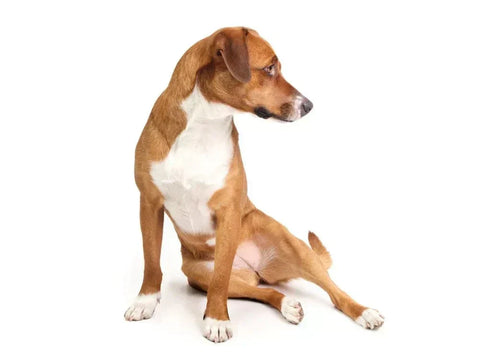

Clicking joints in dogs: tips & care
Have you ever wondered what causes clicking joints in dogs? Perhaps you’ve heard a popping sound when your dog stretches after a snooze, or it could be more noticeable after a long walk?
We know our pets can’t tell us when something hurts, so it’s good to understand what causes clicking in dogs' legs. Read on to discover the causes of clicking joints in dogs and our tips and care guidelines.
Common reasons for dog joint clicking
Clicking joints in dogs isn’t that different from when our own joints click. It could be air popping in the joint fluid or a more serious condition like arthritis. Here we break down some of the common causes:
1) Stretching
Ligaments are strong, flexible tissues linking one joint to another, stretching and bending as joints move. When your dog does a big stretch, a ligament may rub against a bone and produce a popping sound. Very occasional clicking is usually harmless. Still, chat with your vet if it keeps happening as repeated clicking joints in dogs can lead to wear and tear.
2) Joint stiffness
You may notice your dog's leg clicking when they walk, which could be inflammation causing uneven motion within the joint. We know dogs thrive on being active – even into their senior years – so if your pet seems uncomfortable or in pain, it’s best to ask your vet to assess the underlying cause.
3) Air in the joints
Air in the joints is a common reason for clicking joints in dogs. Synovial joint fluid – a liquid that lubricates and cushions the joints – can contain gases, and the level of these gases can change. When the gases escape from the fluid, it creates a popping sound.
4) Bone on bone
Bone-on-bone clicking joints in dogs could be osteoarthritis. Bones rub together when there’s a reduction in cartilage and fluid. You may notice creaking or clicking sounds when your dog exercises. If you notice sounds like this, or your dog shows discomfort, talk to your vet about how to help your pet continue a fun, active life.
5) Arthritis
Arthritis is a condition mostly commonly seen in senior dogs, but can develop in dogs of any age. The cartilage cushioning joints breaks down, which can cause inflammation, pain, and stiffness. If your dog has arthritis, they may limp and be reluctant to move. Although arthritis in dogs is incurable, there’s a lot you can do to help make your dog more comfortable. That may include pain relief, joint supplements, and weight control.
6) Luxating patella
A luxating patella in dogs, sometimes called a floating knee, is when the kneecap temporarily slips out of its normal position. Your vet may recommend anti-inflammatories, joint supplements, weight control, exercise restrictions or surgery. It’s more common in small dog breeds such as Chihuahuas, Pomeranians, and toy poodles, but can also occur in larger breeds like Labradors.
7) Hip dysplasia
Hip dysplasia in dogs is when the hip joint develops abnormally, causing a gap between the ball and socket, leading to instability. The condition is genetic but can be influenced by other factors, such as rapid growth, obesity, and improper exercise.
If your dog has hip dysplasia, they may show signs of stiffness or pain. It can be heart-wrenching to see your once high-energy dog be reluctant to exercise, but a diagnosis doesn’t mean your dog can’t continue to have a great life. Managing hip dysplasia might include weight control, supplementation, physical therapy, pain relief or surgical intervention.

Senior dog joints clicking
Like us, as dogs age, wear and tear can affect the joints. Senior dog joint issues are not uncommon, but your dog can still enjoy an active life once you know the cause and have a care management plan.
Common issues
Your senior dog may develop arthritis due to an age-associated decline in cartilage, bone density, and synovial fluid. Other factors, such as obesity, previous joint injuries, or genetic predisposition, can also increase the risk of arthritis in older dogs.
Simple tips & care
Dogs don’t always show us they are in pain, so no matter how much your dog tries to convince you otherwise, avoid long periods of high-impact exercises like chasing a ball.
Stay on stop of their weight management and encourage regular gentle exercise.
Puppy joints clicking
Puppies have soft, malleable joints. Puppy joint clicking is, in most cases, harmless, resulting from air in the joints or the looseness of developing ligaments.
Common issues
If your puppy displays signs of discomfort or you hear regular clicking or popping, it’s best to consult your vet. X-rays can help identify joint abnormalities like hip dysplasia. Responsible breeders routinely hip score their breeding dogs and puppies to assess hip health and condition.
Simple tips & care
We love spending time with puppies, but it’s essential to choose appropriate exercise your pup during the first 18 months. They still have growth plates, and their bones, joints and muscles are growing.
Speak to your vet about the right level of exercise for your puppy.
Tips, care and getting more advice
If the clicking in your dog's leg appears to cause pain or discomfort, always speak to your vet. Here are some tips for caring for a dog with joint stiffness:
- Daily moderate exercise
- Manage your dog’s weight
- Consider joint support supplements
- Make simple home adaptations
Exercises - indoor & outdoor
As well as a daily walk, you may consider visiting a veterinary-approved canine massage therapist to learn stretching exercises for dogs, such as the following:
- Front leg stretch: Lift a front leg and gently extend it forward for 10 seconds
- Rear leg stretch: If your dog is on his back waiting for a tummy tickle, extend a hind leg to stretch it gently.
- Play bow: Teach your dog to play bow to stretch his muscles
-
Bicycling movement: Gently move your dog’s back legs in a bicycling motion.
Another fantastic exercise for dog joint stiffness is swimming and hydrotherapy. It helps build muscle without pressure on your dog’s joints. Most dogs either love it straight away or learn to enjoy it. Contact your vet for details of approved canine hydrotherapy centres.




